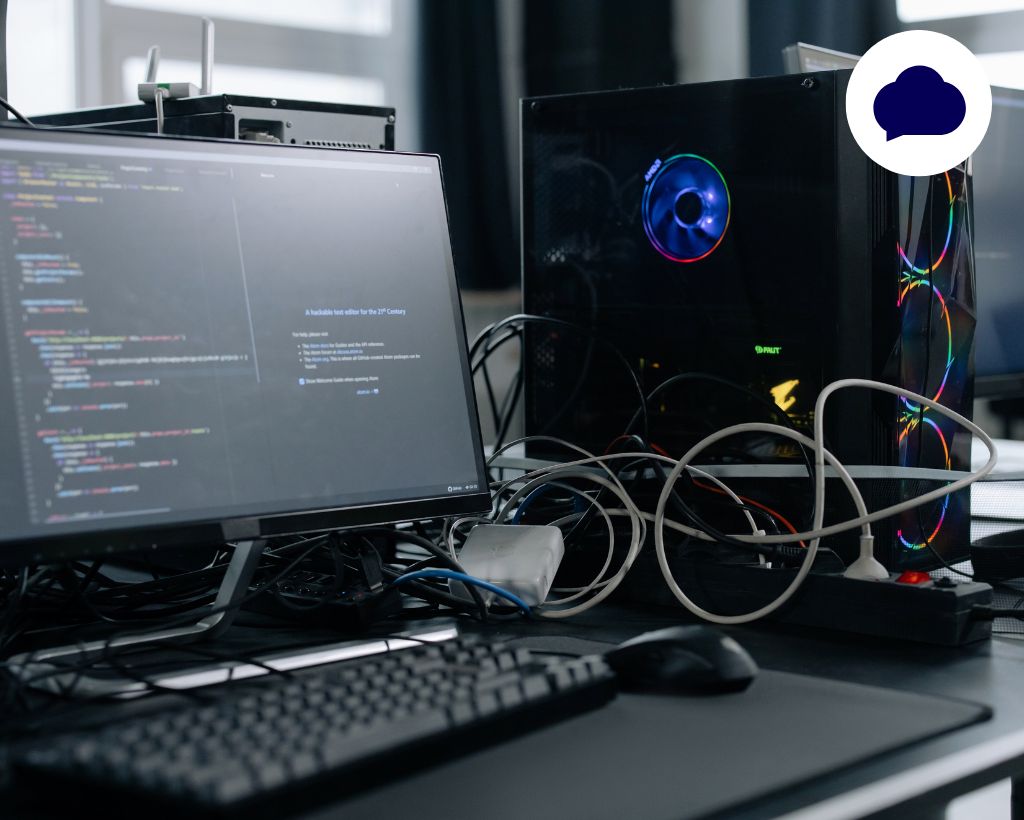
Business Intelligence as a Service
Try PlusClouds Eaglet service and find high quality B2B hot leads and opportunites with AI support.


In today's digital world, the ability for every device to communicate perfectly with one another depends on the establishment of certain standards. This is exactly where the OSI (Open Systems Interconnection) model comes into play as a reference model that explains how network communication occurs in layers, making it easier to understand. Defined by ISO in 1984, the OSI model establishes a universal language for the design, management, and troubleshooting of network systems by addressing data flow between computer networks across seven distinct layers.
In this article, we will examine each layer of the OSI model in technical detail, introduce the protocols with examples, and touch upon their counterparts in modern network architectures.
During the early days of widespread computer networks, manufacturers were developing their proprietary systems, leading to incompatibility issues between different devices. The OSI model was created to eliminate this incompatibility and provide manufacturers with a standard roadmap.
Standardizes Communication: Ensures that all network components operate within a common structure.
Layer-Based Distinction: Facilitates problem detection and resolution by dividing complex network processes into seven layers.
Universal Educational Tool: Serves as a fundamental learning model for network engineers.
Protocol Independent: Does not need to match real-world protocols one-to-one, providing conceptual guidance.
The OSI model consists of 7 layers arranged from top to bottom. Each layer communicates only with the layer directly above and below it and performs an abstracted function.
Function: Responsible for transmitting data through physical signals (electrical, optical, radio waves).
Elements: Ethernet cables (Cat5, Cat6), fiber optic cables, connectors, HUBs, repeaters, voltage levels.
Real-World Example: Transmitting the signal from the end of a network cable to the device at the other end.
Issue Detection Example: Cable breakage or signal loss occurs at this layer.
Function: Converts data from the physical layer into a frame format and directs it to the target MAC address. Also provides error detection and flow control.
Sub-Layers: LLC (Logical Link Control) – connection establishment and management
MAC (Media Access Control) – physical addressing and medium access control
Protocols: Ethernet, PPP, HDLC, ATM
Hardware: Switches, network cards
Example: The data sent by a computer via its network card reaching the correct MAC address.
Function: Performs logical addressing (IP) and routing procedures to deliver data to the target device.
Protocols: IPv4, IPv6, ICMP, IPsec, OSPF, BGP Hardware: Routers, Layer 3 switches
Real-World Example: Determining the shortest path for data to be sent from Device A to Device B.
Issue Example: If data cannot reach its destination due to incorrect IP configuration, the issue is at this layer.
Function: Provides end-to-end connections. Responsible for segmenting, ordering, reassembling data, and performing error control.
Protocols:
TCP (Transmission Control Protocol) – connection-based, reliable
UDP (User Datagram Protocol) – connectionless, fast but unreliable
Example: Ensuring all data is transmitted in the correct order when loading a webpage (TCP) or delivering a video stream without delay (UDP).
Function: Manages opening, maintaining, and closing sessions between applications. Coordinates seamless data exchange between two devices.
Protocols/Examples: NetBIOS, RPC, SMB, SQL Session, TLS (with certain features)
Real-World Example: Logging into an email server and managing messaging operations.
Function: Handles formatting, compression, encryption, and coding of data.
Functions:
Format conversion: XML, JSON
Encoding: ASCII, EBCDIC
Encryption: TLS/SSL
Compression: JPEG, MPEG
Example: Presenting images from a website correctly to the user, encrypting data transmission in HTTPS traffic.
Function: The layer that interacts directly with user applications. Provides network services required by software such as browsers and email clients.
Protocols: HTTP, HTTPS, FTP, DNS, SMTP, POP3, IMAP
Real-World Example: Your web browser connecting to www.example.com to retrieve page content.
Although modern network architectures are not built directly according to the OSI model, the OSI model remains an effective reference in the design of protocol stacks, diagnosing network issues, and software development processes.
Example Scenario:
When a user wants to open a webpage in their browser:
Layer 7 (HTTP) sends the request,
Layer 4 (TCP) creates the data packets,
Layer 3 (IP) finds the correct address,
Layer 2 (MAC) constructs the frame,
Layer 1 transmits the data physically.
This process completes in milliseconds.

Each of the layers of the network defined by the OSI model forms the foundation of enterprise IT infrastructures. PlusClouds allows you to establish efficient systems operating across these layers with its redundant data centers, secure network solutions, and high availability architectures.
Network and Security Services: IP management, firewall, DDoS protection
Load Balancer and Gateway Solutions: Maximum performance in your transport and network layers
Application Layer Services: CDN, web security, API infrastructures
Transform your systems with PlusClouds to be not only fast but also scalable, secure, and sustainable. For more information, you can visit our website or contact our experts.
1. Is the OSI model used literally in real networks?
No. The OSI model is conceptual. In practice, the TCP/IP model is typically used. However, the OSI model is frequently referred to as a reference model in educational and analytical processes.
2. Which layer does the firewall operate at in the OSI model?
Basic firewalls generally operate at the 3rd (Network) and 4th (Transport) layers. To provide security at the application level, firewalls at the 7th layer (Application) are used.
3. How does data pass between OSI layers?
Each layer adds its own header while passing data down to the lower layer. This process is known as "encapsulation." On the receiver side, these headers are removed in order.
4. What is the relationship between the TCP/IP model and the OSI model?
The TCP/IP model consists of 4 layers and combines some layers of the OSI model. For example, the application, presentation, and session layers of the OSI are merged into a single application layer in TCP/IP.
5. Why is it important to learn the OSI model?
Understanding the OSI model is essential for analyzing network issues as it helps to identify what types of problems may exist at each layer. It is also critical for software developers to implement the right solutions at the correct layer.
The OSI model is a conceptual framework that serves as a foundation in the modern information world. By providing a layered approach, it offers a strong reference for the design, management, troubleshooting, and security of network systems. With the OSI model, complex network structures can be made comprehensible.
If you want to shape your infrastructure according to this model and prepare for the future, working with a professional partner like PlusClouds will provide you with significant advantages in operational efficiency and security.